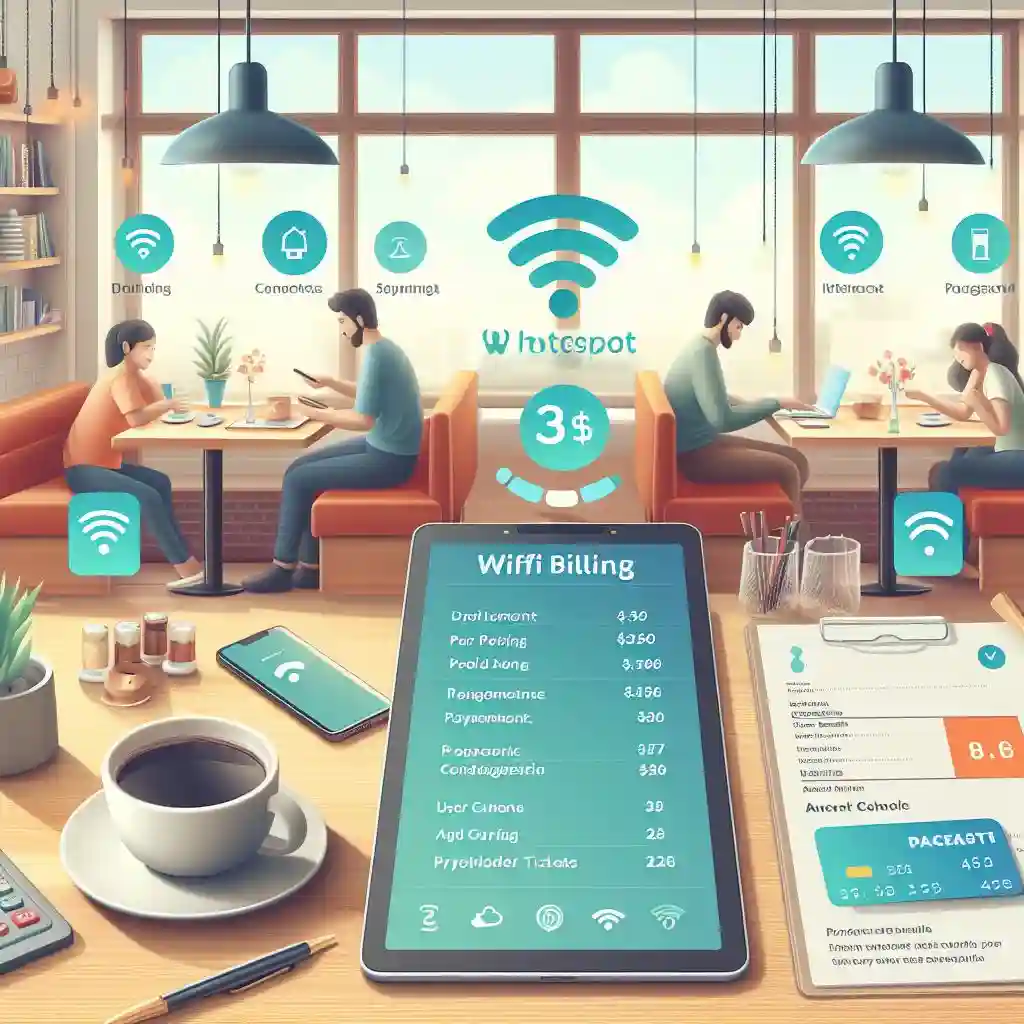If you want to create a WiFi billing system, you can read the guide in this article. Whether you are a cafe or hotel owner who is looking for a way or any circumstances.
If you’re looking for a simple WiFi billing system, there are software solutions that can help automate the billing process of your WiFi service. These systems typically offer features like hotspot billing, payment gateway integration, and the ability to create and manage user accounts and login codes. They can control access to the WiFi network, manage bandwidth, and handle payments, making it easier for businesses to provide WiFi services to customers.
Create a WiFi Billing System

For instance, some software allows you to accept credit cards, integrate with property management systems (PMS), and even print prepaid voucher tickets. They can manage devices like smartphones, tablets, laptops, and computers, and offer user roaming between locations. Additionally, they may provide marketing tools, detailed reports, and customer data for targeted campaigns.
Read Also:
- How to Create Free Hotspot Billing without Mikrotik
- Cable Management Tips
- HOW TO SET UP WIRELESS APPLE CARPLAY
1. Choose the Right Software
Selecting the appropriate software is crucial for building an effective billing system. Here are some popular options:
- Antamedia HotSpot Billing Solution: This professional software allows you to automate hotspot billing for your WiFi service. It integrates seamlessly with payment gateways like PayPal, making it easy for customers to pay for network access directly from their devices.
- PortaBilling: PortaBilling offers real-time charging and voucher authorization for WiFi hotspots. It’s a robust solution for ISPs to control and bill customers for internet services.
2. Understand the System Architecture
A typical billing system architecture involves several components:
- CRM/OMOF System: Manages customer interactions and contacts the billing system.
- Billing System: Handles rating, invoicing, and payment processing.
- Provisioning System: Assigns services and manages network inventory (phone numbers, IP addresses, etc.).
3. Billing Process Overview
Here’s how the billing process works:
- Usage Generation: When a customer uses the WiFi service, the mediation system collects usage data (call-detail records or CDRs) from the network switch.
- Rating: The CDRs are rated based on factors like call type (local, international, etc.) and time of day.
- Invoice Generation: Non-usage charges (discounts, monthly fees) are applied, and the information is stored until the monthly invoice is generated.
- Printing and Mailing: The invoice is converted into a readable format, printed, and mailed to the customer.
4. Features to Consider
When designing your billing system, consider the following features:
- User Accounts: Create flexible user accounts with login codes or vouchers.
- Payment Gateways: Integrate with various payment gateways for seamless transactions.
- Hotel PMS Integration: Automate billing for guests by linking with property management systems (PMS).
- Session Logs: Track data/time usage for accurate billing.
- Marketing Campaign Reports: Analyze user behavior and tailor campaigns.
- Custom Terms of Use: Define terms for users accessing the WiFi service.
5. Implementation Steps to Create a WiFi billing System
- Install and Configure the Billing Software: Follow the installation instructions provided by the chosen software.
- Set Up Payment Gateways: Configure merchant accounts and API signatures for payment processing.
- Integrate with PMS (Optional): If you’re running a hotel or similar establishment, integrate with the PMS for guest billing.
- Test and Optimize: Ensure that the billing system works smoothly and meets your requirements.
Remember that each WiFi environment may have unique needs, so adapt the system accordingly.
Conclusion
In conclusion, create a WiFi billing system involves selecting the right software, understanding the system architecture, and implementing the necessary features. Whether you’re running a cozy café or managing a hotel, a well-designed billing system ensures that your customers can enjoy seamless internet access while you keep track of usage and payments. So, let’s raise our virtual coffee mugs to efficient billing systems and happy browsing!

